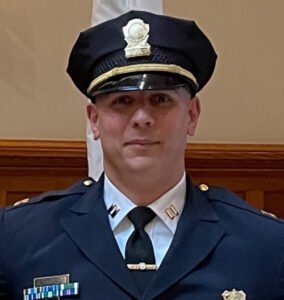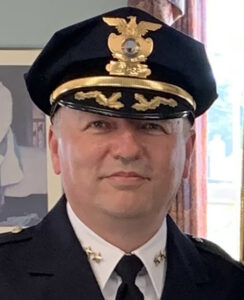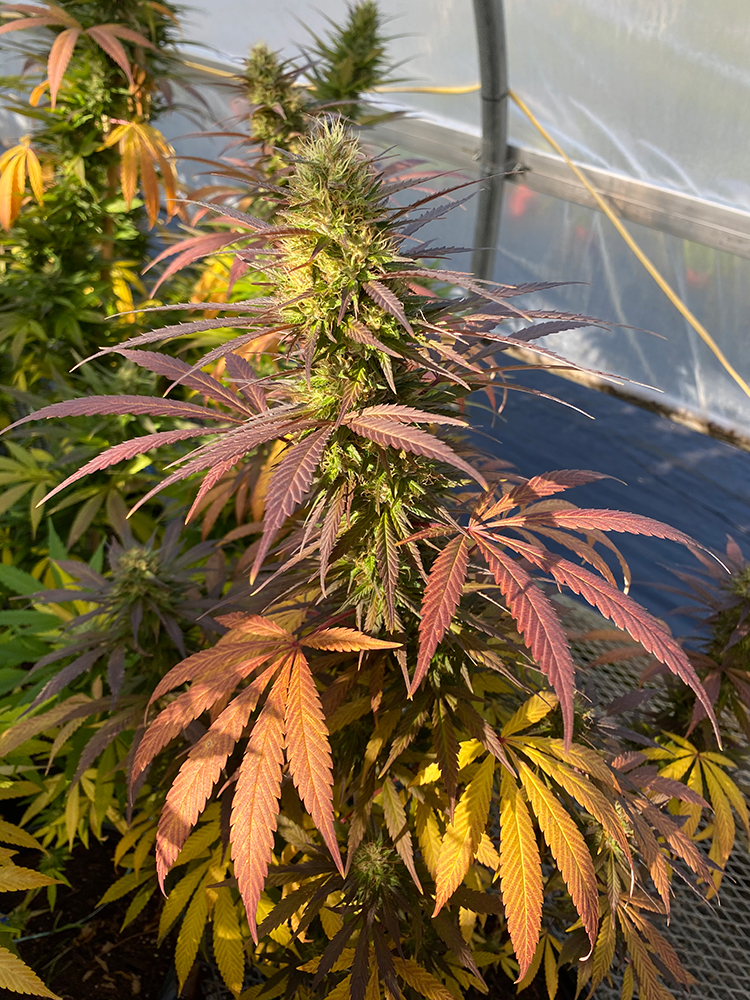Nearly four months after Connecticut legalized marijuana, police in local towns are unsure of how to enforce driving while under the influence of weed.
The law legalizing marijuana went into effect July 1. While the bill signed by Gov. Ned Lamont, a Democrat, made the state the 19th in the U.S. to allow recreational use, it did not adequately give law enforcement the tools it needs to arrest drivers who are high behind the wheel, local police officials said.
House Minority Leader Vincent Candelora (R – North Branford) said the bill and Senate Bill 6004, the Police Accountability Act, will lead to an unintended consequence of a reduction in traffic stops.
We’re already seeing a reduction in individuals being pulled over for traffic violations,” Candelora said. “The concern is when somebody is pulled over for DUI what they’re left with, and this is why they (police) need to be trained, it would be observing mannerisms.”

Observing the behaviors of a driver is one of the key indictors that police are given with drivers that are suspected to be under the influence of marijuana. A chemical test to detect marijuana in ones system does not exist unlike tests for alcohol.
That means police are confused and hesitant to enforce the law, officers said.
“The biggest issue that I heard and that I shared was how do we ensure that police officers are able to manage individuals who might be driving under the influence of cannabis,” said House Majority Leader Jason Rojas (D – East Hartford). “We don’t have a testing capability the way we do with alcohol, with a breathalyzer.”
Cheshire Police Chief Neil Dryfe said that not knowing what exactly constitutes as over the limit for what exactly is the level of cannabis in the system that impairs driving is a concern.
“Some officers express confusion about exactly what circumstances are going to be justified in making an arrest for a DUI,” Dryfe said. “It’s going to take some time.”
Police, however, didn’t have the time to prepare for enforcing marijuana-related DUI provisions given the complexity of the 300-page bill.
A bulletin from the Police Officer Standards and Training Council (POSTC) was distributed to chief law enforcement officers, training officers, protective services and resident troopers less than a week before Gov. Lamont signed the bill.
Karen Boisvert, the administrator at the Connecticut State Police Academy, distributed the bulletin on June 25. The bulletin highlights the basic key points officers need to know before enforcing marijuana-related traffic offenses.
“This bulletin is intended to be as inclusive as possible,” wrote Bosivert. “However additional correspondence/training may be necessary to provide further guidance.”
Candelora, who opposed the bill, said he thinks police needed to be consulted on enforcement issues before the law went into effect.
“I think on the front end there should have been money put on DREs (Drug Recognition Expert) trained before law went into effect so father than make it legal and then have the officers have to play catch up,” said Candelora. “We should have done them (police departments) a favor and allowed for that training to go into place first.”

A Drug Recognition Expert is a specially trained police officer who is certified to detect and identify motorists who are under the influence of drugs that cause the impairment.
Robert Klin, coordinator of the Drug Evaluation and Classification (DEC) Program, told HQNN that Connecticut had 54 certified DREs when the bill passed in July.
Fast forward to present day and Connecticut has 52 certified DREs. That number has decreased since Connecticut legalized recreational marijuana
In a public hearing in February, Deputy Commissioner Garrett Eucalitto of the Connecticut Department of Transportation (DOT) said that Connecticut had 60 DREs, including 14 being State Troopers.
As part of the new bill, POSTC and the Department of Transportation will collaborate to determine the proper amount of DREs for each department.
POSTC reported that research to determine that number is currently underway. The deadline for POSTC to submit the results to the Governor and the Secretary of the Office of Policy and Management is July 1, 2022.
New Haven Police Captain David Zannelli said the department has few DREs and that the process for certifying a DRE takes time.
“We don’t have that many DREs. We do not,” Zannelli said. “We are in the process of certifying about 15.”
Smaller towns, such as Cheshire, rely on bigger and nearby departments to assist with cases that involve a DRE.


“If we have an occasion where we suspect somebody was under the influence of something other than alcohol we will try to get mutual aid from another department to come and evaluate that person for us,” Dryfe said.
Bosivert said that prior to the bill the POSTC has worked closely with the DOT to host DRE and ARIDE classes on a continuous basis.
Advanced Roadside Impaired Driving Enforcement (ARIDE) is the prerequisite for the DRE class. Officers must pass ARIDE training before taking DRE classes.
The DRE class involves two weeks of academic training followed by a field certification phase and a final knowledge examination.
One significant detection tool — the nose — is not legal to use in detecting marijuana under the Carroll Doctrine, which stems from a U.S. Supreme Court decision in 1925 that requires probable cause before a warrantless search of a vehicle can be conducted. The odor of cannabis is not sufficient to establish probable cause.
Zannelli said that experienced officers will be able to handle restrictions but younger officers may struggle with a determination that a motorist is drving while impaired.
“I made over a hundred DUI arrests in my career as a rookie in Rhode Island,” Zannelli said. “I’ve been here 15 years, but our newer officers might not know that that has to come with experience.”
Ironically, the legalization of marijuana occurred in a drop of driving while high in Connecticut, according to a survey conducted by the Connecticut AAA. The survey, released Oct 28, showed that about 4% of motorists admitted to driving within an hour of consuming cannabis, down from 7% in 2018.
Local and state law enforcement have no figures on marijuana-related driving offenses.
Zannelli said enforcement is confusing in part because the bill legalizing marijuana seems to be headed in the same direction as laws related to tobacco consumption.
“I think in a lot of ways, it’s (Senate Bill 1201) trying to marry them to tobacco laws,” said Captain Zannelli. “A little bit more restricted because you can walk down the street smoking tobacco, but tobacco doesn’t have that intoxicating or new forward effect like when you’re driving.”
Connecticut residents can consume marijuana in their homes now. Starting July 1, 2023, residents 21 and older can grow up to 12 marijuana plants per household.
A National Survey was conducted during 2017-2019 by the Substance Abuse and Mental Health Services Administration (SAMHSA). The study said that 44.8% of individuals between the ages of 18-25 have used marijuana within the past year. The national average is 35%.
Becky Goetsch is the owner of Running Brook Hemp Co. in Killingworth. Goetsch grows marijuana plants filled across a two greenhouses at Running Brook Hemp Co. However, her plants are CBD-heavy rather than THC-heavy.
CBD and THC are cannabinoids found in marijuana plants. The main difference between the two is that a person will experience a high whereas CBD will not.

Hemp Greenhouse 
CBD Hemp Flower 
Potted Hemp Plants
Goetsch and Running Brook Hemp Co. will be applying to become a micro-cultivator of marijuana, hoping to find the same success she has found with CBD-heavy marijuana.
Goetsch said she thinks the bill falls short on educating citizens about the medicinal benefits of the plant. She has a solution.
“I think the conversation should be a lot more open,” said Goetsch. “I think there should be dialogue between enforcement and cultivators, such as myself, that have this mindset of the medicinal aspect of the plant so that they can really understand the benefits of the plant.”
Goetsch knows that it is not an easy task for law enforcement to adapt to. The world is shifting to a whole new normal.
“I believe that they (law enforcement) have a lot of struggles,” said Goetsch. “There’s a change in culture that has to happen and I have a lot of empathy for how they’re going to adjust to this.”
Attempts to raise awareness to help prevent Connecticut drivers from driving high have been made.
The Connecticut Highway Safety of the Connecticut Department of Transportation has released a string of public service announcements via Twitter anchored with the hashtag #DriveHighEqualsDUI.
The National Highway Traffic Safety Administration has been airing PSAs for the past couple of years. Their first, Feel Different, was aired in August of 2018.
The federal agency followed Feel Different up with Spotted: Driving High two years later in August of 2020.
State Rep. Steve Stafstrom (D – Bridgeport) helped to write the enforcement provisions on the bill. He said he believes that not every department needs a DRE on duty all the time.
“You only really need one or two per shift and probably not every police department. If you’ve got them kind of in the region with a bunch of small towns, there’s no reason that Hamden has to have a DRE on shift,” Stafstrom said.
The message from government officials and law enforcement is clear. Be responsible and do not drive while high under the influence of marijuana.

